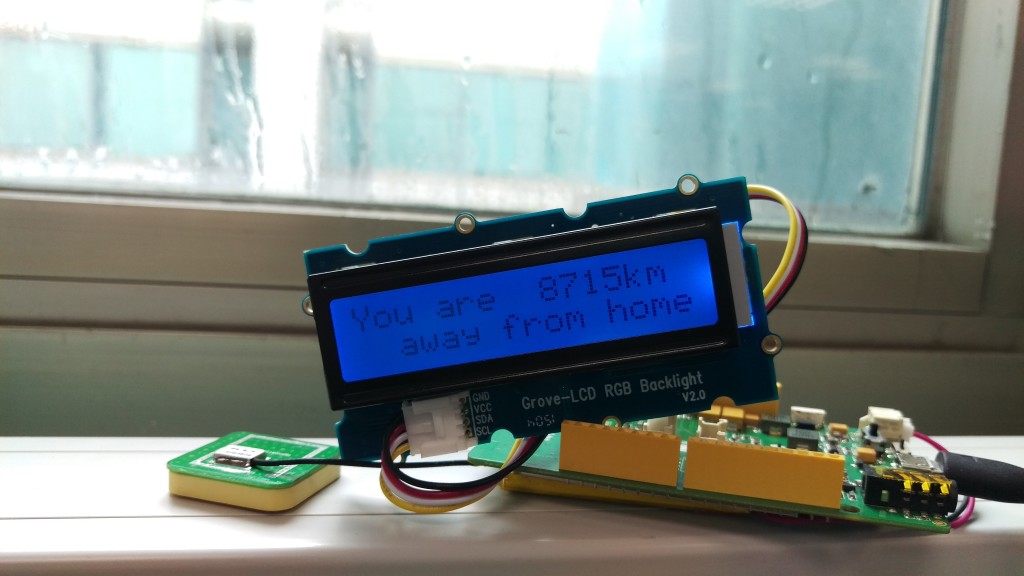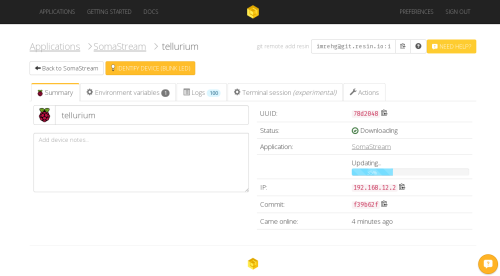I while back I’ve exchanged some of my points earned from posting projects to a MediaTek LinkIt One on the Hackster.io Store. This is my first project with that, trying to do something different than what I can do with the hardware I (literally) amassed so far. Being an expat and traveller, GPS / location sensing is always a timely topic, so set out to build something around that.
It was a long typhoon day when I started experimenting with the LinkIt one, and and as rainy days go – I’ve felt it would be great to know how far am I from home? Of course there’s a GPS in every single smartphone these days, but a dedicated device can still evoke a different feeling. So the idea for Dorothy came about.
Basic version: where are are you?

The basic idea is connect the GPS module and a Grove LCD RGB Backlight screen, and colour-code the distance from home. The LCD speaks I2C, so can directly connect it up to the I2C socket on the LinkIt One.


